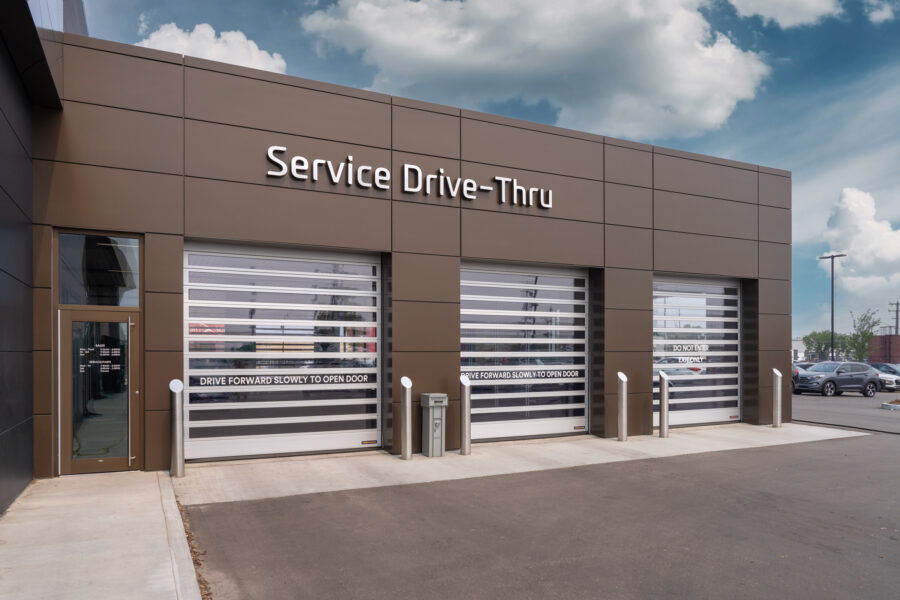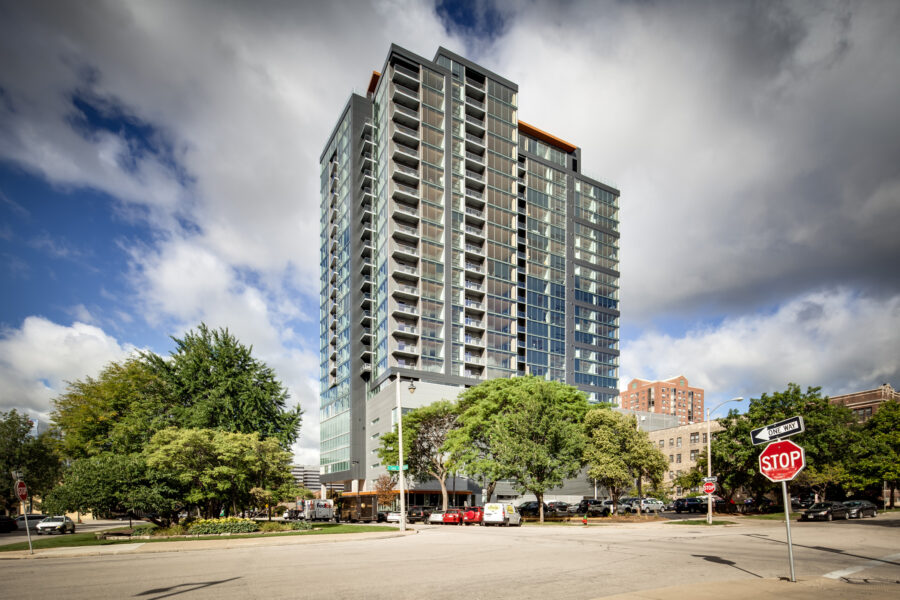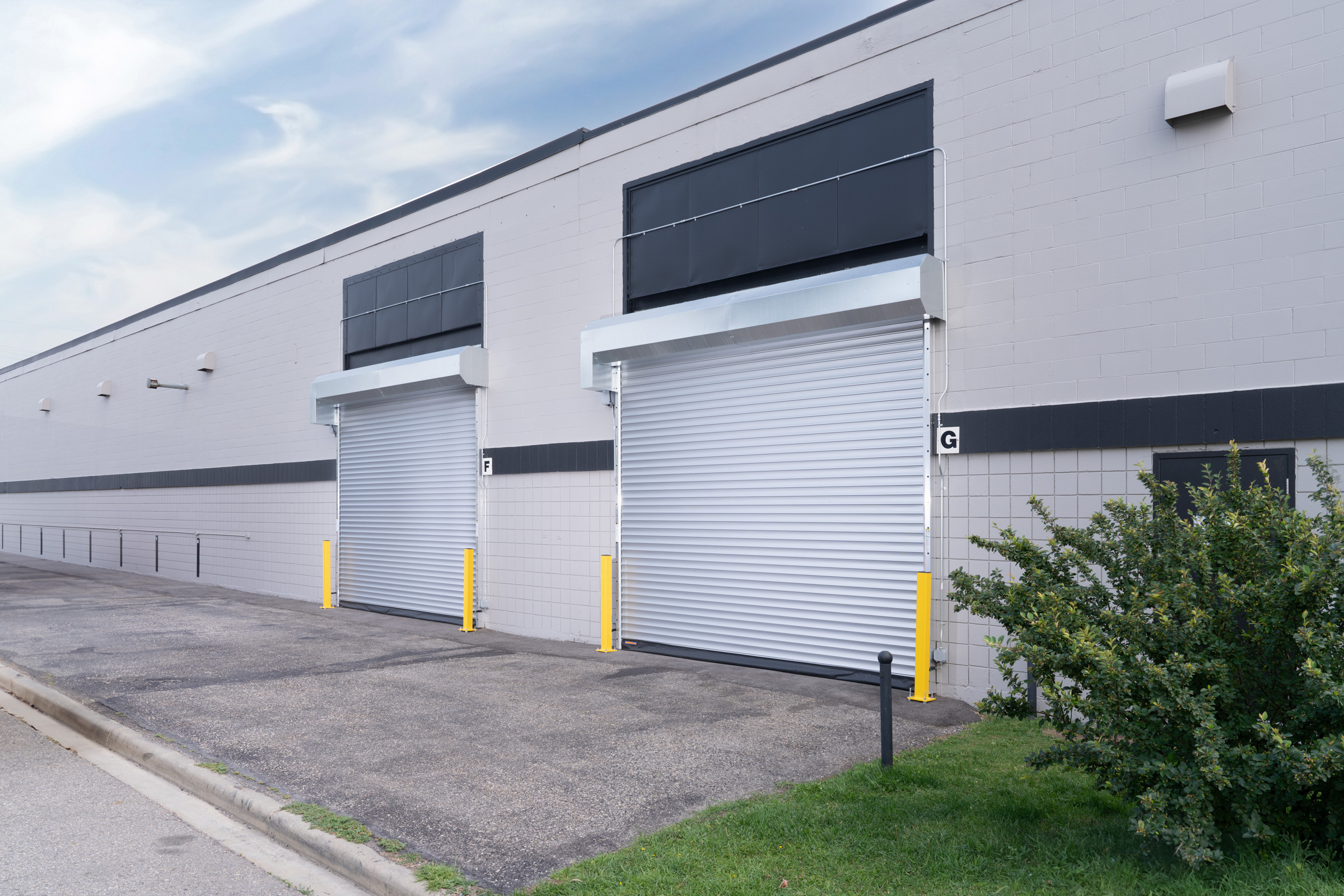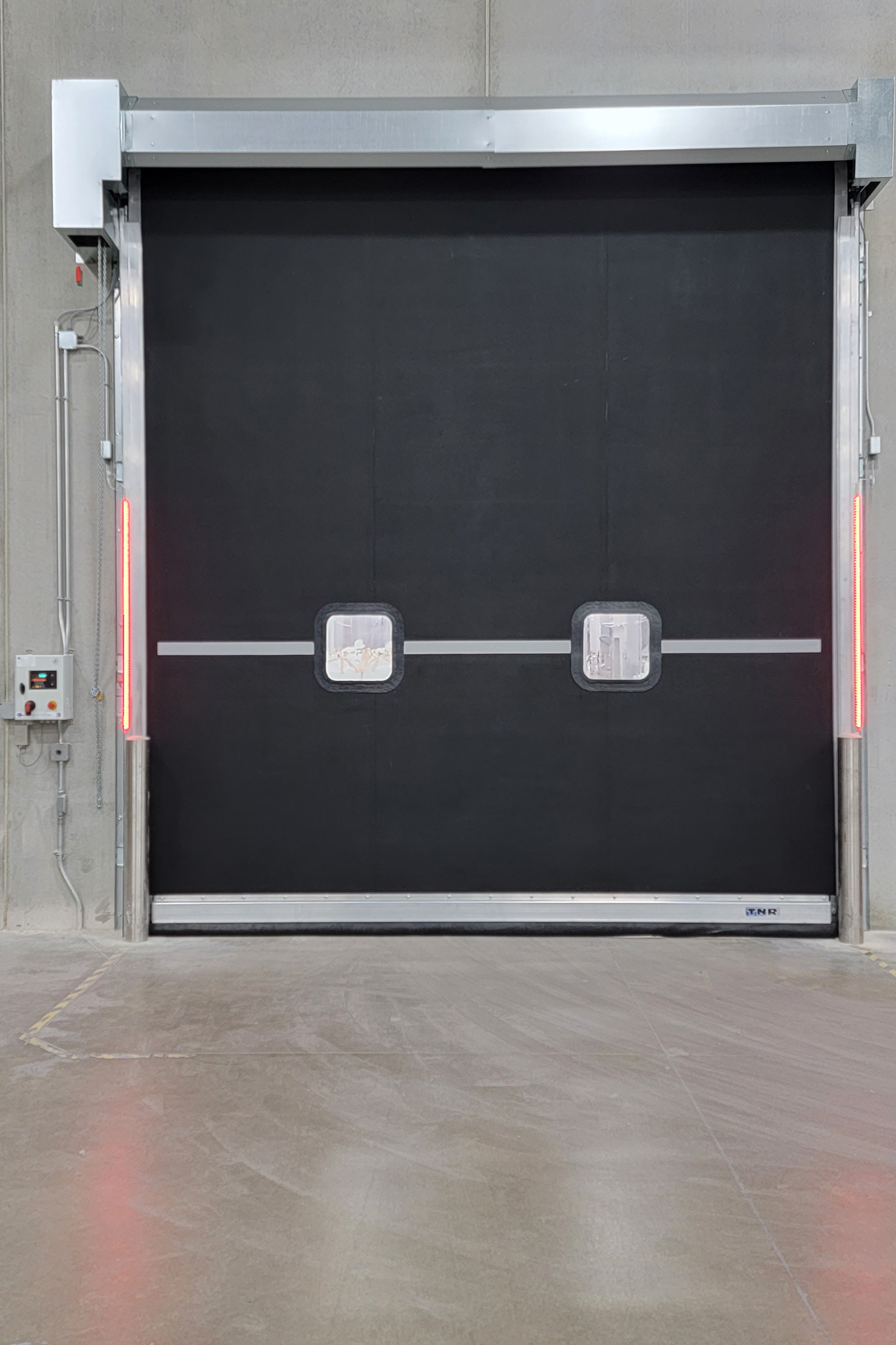Story at a glance:
- Commercial doors come in different types for different purposes, and you don’t need to overspend or cut corners.
- The type of door chosen for a project can significantly affect its operations, energy use, and safety in the finished building.
- The Ascent MKE a high-rise apartment building in Milwaukee turned to Hörmann for its commercial doors.
Not all commercial doors are the same—not by a long shot. They can require 100 or more cycles of up-and-down each day, or far less. They can be human-scale or as wide as monster truck. And while the color of the doors in some industrial applications might not matter, in others it can mean the world with regard to aesthetics, branding, and safety. In all cases doors must be resilient to errors by drivers and other operators.
Because commercial doors have significant impact on operations, energy use, and building construction costs, it’s important for architects and builders to select the right product based on how those doors will be used.
- Hörmann’s rubber roll-up doors offer incredible efficiency and dependability. Photo courtesy of Hörmann Group North America
- Hörmann commercial doors are built to last and available in a wide range of styles, sizes, and design options. Photo courtesy of Hörmann Group North America
Leading door manufacturer Hörmann produces and sells commercial doors in two distinct categories—sectional and high-performance doors. Architects, builders, and owners should develop a good understanding of their differences. It’s completely possible that a building would use both types of doors at various ingress and egress points, depending on who and what constitutes traffic at those nodes. Also, because doors have the capacity to restrict the transmission of everything—including microbes, dust, warmth, cold, and intruders—the types of doors used can significantly affect operations, energy use, and safety.
“The difference between choosing a sectional door and a high-performance door is mostly based on cycle count,” says Zach Buckner, director of marketing at Hörmann North America. “The higher the cycle count, the more a door has to perform.” He says a door that will need to go up and down 55 times a day or more will probably perform best if it’s a high-performance door.

A closer look at the Speed-Guardian 5000 Series of high-performance rigid panel doors. Photo courtesy of Hörmann Group North America
But that doesn’t mean a building would use one type of door and not the other. Traffic patterns into and within a structure can vary, as do the functions within spaces. An automotive service center, for example, might have a street-facing door that gets a lot of vehicles passing in and out through the course of a day—and note the people driving through such an entry are not professionals. That point of ingress should have a high-performance door for both the high cycle count and available activation methods and safety accessories (high-performance doors may include motion detection sensors that make disabling damage less likely). Alternatively, an interior door leading to specific service areas might be a sectional door, opened less frequently for vehicles driven by trained employees.
“In optimal situations our local Hörmann dealers partner with architects in project planning stages to figure out what is needed and what is not,” explains Buckner. “We recently advised the architects on a project to use the lower-cost sectional doors in some parts of the structure that simply did not merit high cycle count doors. It ended up saving the owner a tremendous amount of money.”
Architects have many other door options as well. Doors by the company used in heavy industrial applications like mining equipment storage facilities can be as wide as 47 feet and high as 55 feet. Some doors, including those used for hospital clean rooms and airport luggage transfers, might be as small as 41 inches wide and 72 inches high.
While the commercial doors of old offered little in the realm of aesthetics (doors were a basic industrial silver), Hörmann offers high-performance and sectional doors in any color on the RAL color chart. Some fire stations opt for a ruby red, green beige, or olive yellow that feels at home in the Pacific Northwest, while a specific shade of black is favored by a certain luxury auto brand for its dealerships.

The Speed-Guardian 5000 Series offers more efficient slat design. Photo courtesy of Hörmann Group North America
But it’s not only fire stations, car dealerships, warehouses, and heavy industrial applications where high-performance doors are used. Multifamily residential properties with parking facilities have a distinct need for high-cycle, high-performance doors, too. That’s especially so with buildings that strive for sustainability. Several Hörmann products provide LEED-qualifying points.
One such building is the Ascent MKE, a high-rise apartment building in Milwaukee. At 25 stories, it’s the world’s tallest timber-concrete hybrid building and is LEED Silver-certified. Completed in 2022, it has high-performance parking garage doors that keep Wisconsin weather out and allow cars in. It’s one of many sustainably-minded projects that utilizes Hörmann products.

Ascent MKE. Photo courtesy of Korb + Associates
Optional LED Lite-Advance warning light strips installed on the guide tracks used here and in other applications heighten awareness and visibility for both vehicular and pedestrian traffic. This safe accessory is one of several that may be incorporated into the door packages to maximize safety and functionality at the door opening. Hörmann has a service support app that enables DIY troubleshooting for common issues without a service call.
And company support begins long before the doors are installed. Hörmann has a full-time architect on staff, working with designers and owners to make sure the appropriate door is specified, plus an extensive dealer network across North America that sells, installs, and supports the doors. The goal for all those involved with a project is always to put the right doors in the right places.



